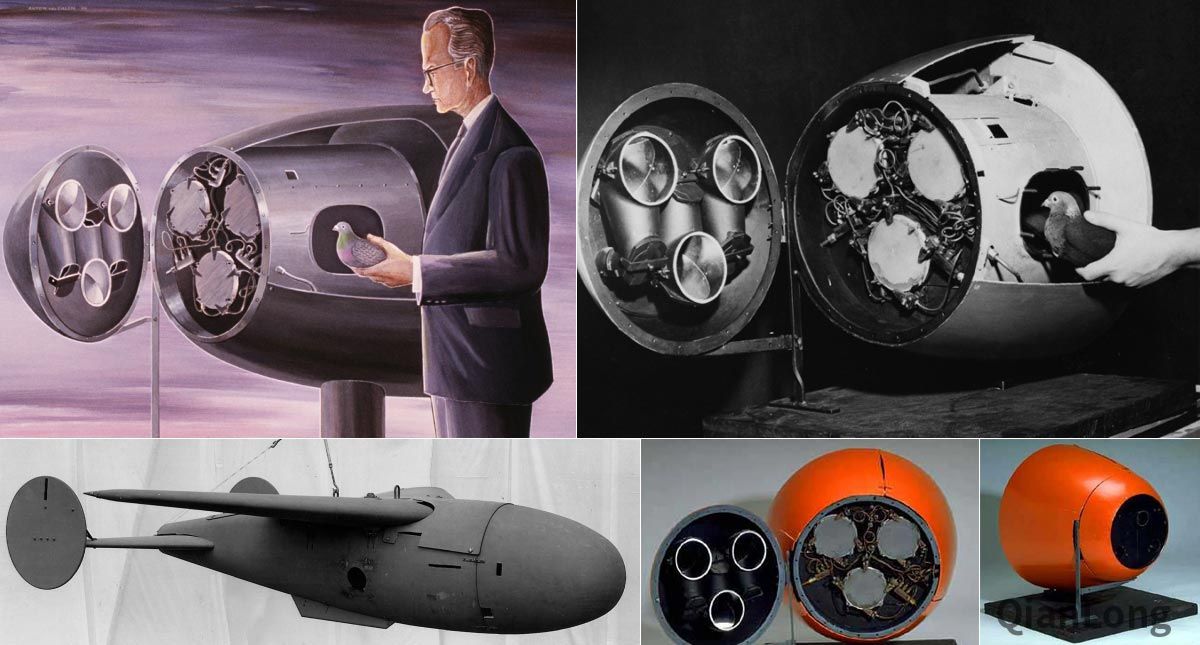
Missile Guiding Pigeons: The Forgotten Military Project
Introduction
The Pigeon Project, a lesser-known chapter of military history, involved the training of pigeons to guide missiles during World War II. This ambitious and unconventional initiative aimed to harness the pigeons' natural navigation abilities for guiding precision-guided munitions. This article explores the origins, methodologies, and outcomes of the Pigeon Project, shedding light on an intriguing intersection of animal behavior and military technology.
Origins and Context
In the early 1940s, military research sought innovative ways to improve the accuracy of guided missiles. While various technologies were being explored, the concept of using pigeons as a guiding system emerged from the work of psychologist B.F. Skinner and animal behaviorist Richard F. Thompson. The idea was to leverage the pigeons' exceptional visual acuity and homing instincts to direct missiles toward their targets.
Training Methodologies
The training process for the Pigeon Project was both elaborate and ingenious, reflecting the military's commitment to exploring unconventional solutions. The project employed the following key methodologies:

1. Habituation to Control Mechanisms: Pigeons were first habituated to the control mechanisms that would be used to guide the missiles. This involved training pigeons to peck at specific targets or indicators within a controlled environment, associating their actions with rewards.
2. Target Recognition Training: Pigeons were trained to recognize and peck at images or symbols representing different target areas. These symbols were displayed on screens within a mock-up of a missile's guidance system. The pigeons' pecking would correspond to the desired flight path of the missile.
3. Integration with Missile Guidance Systems: The trained pigeons were then integrated into a guidance system prototype, where their pecking at the symbols was translated into directional commands for the missile. This required sophisticated mechanisms to ensure accurate translation of the pigeons' actions into missile control inputs.
4. Testing and Calibration: Extensive testing was conducted to ensure the effectiveness and reliability of the pigeons' guidance system. This included simulations and live tests to assess how well the pigeons could guide the missile toward target areas.
Key Findings and Challenges
The Pigeon Project yielded several significant findings and faced notable challenges:
1. Effectiveness: Early tests indicated that pigeons could effectively guide missiles toward targets, demonstrating their potential for enhancing missile accuracy. The pigeons' natural ability to focus on and recognize specific targets proved advantageous.
2. Technical Limitations: Despite the initial successes, several technical challenges emerged. The integration of biological input with mechanical guidance systems posed difficulties, and the reliability of the system was inconsistent.
3. Ethical Considerations: The project raised ethical questions regarding the use of animals in military applications. The welfare of the pigeons and their role in a potentially lethal technology prompted debates about the moral implications of such experiments.
4. Operational Feasibility: The practicality of using pigeons for missile guidance was eventually questioned. The complexity of integrating biological systems with modern technology and the rapid advancement of electronic guidance systems diminished the project's feasibility.
Legacy and Impact
The Pigeon Project, while ultimately not adopted for widespread use, had several notable impacts:
1. Innovative Approach: The project demonstrated an innovative approach to problem-solving and highlighted the potential for unconventional methods in technological development.
2. Research Contributions: The research contributed to the understanding of animal cognition and behavior, particularly in the context of sensory perception and decision-making.
3. Historical Significance: The project remains a fascinating historical anecdote within the broader context of military technology and animal behavior studies, illustrating the lengths to which researchers and military personnel were willing to go during wartime.
4. Ethical Discussions: The project contributed to ongoing discussions about the ethical treatment of animals in research and the responsibilities of scientists in ensuring humane practices.
Conclusion
The Pigeon Project stands as a remarkable example of the intersection between animal behavior and military technology. Despite the challenges and eventual discontinuation of the project, it provided valuable insights into both the capabilities of pigeons and the complexities of integrating biological systems with mechanical technologies. This unique initiative reflects the innovative spirit of wartime research and continues to intrigue historians and scientists alike.









